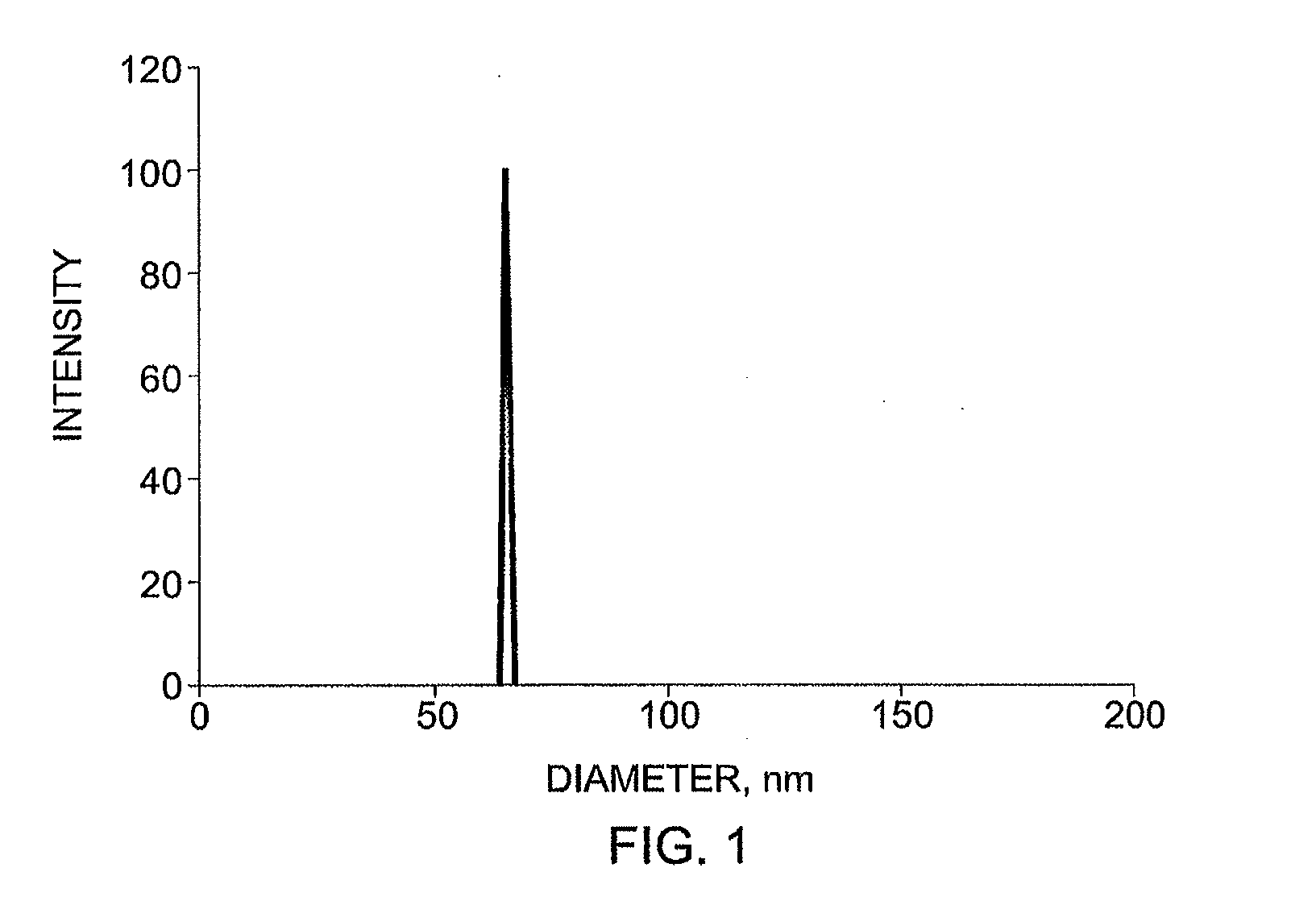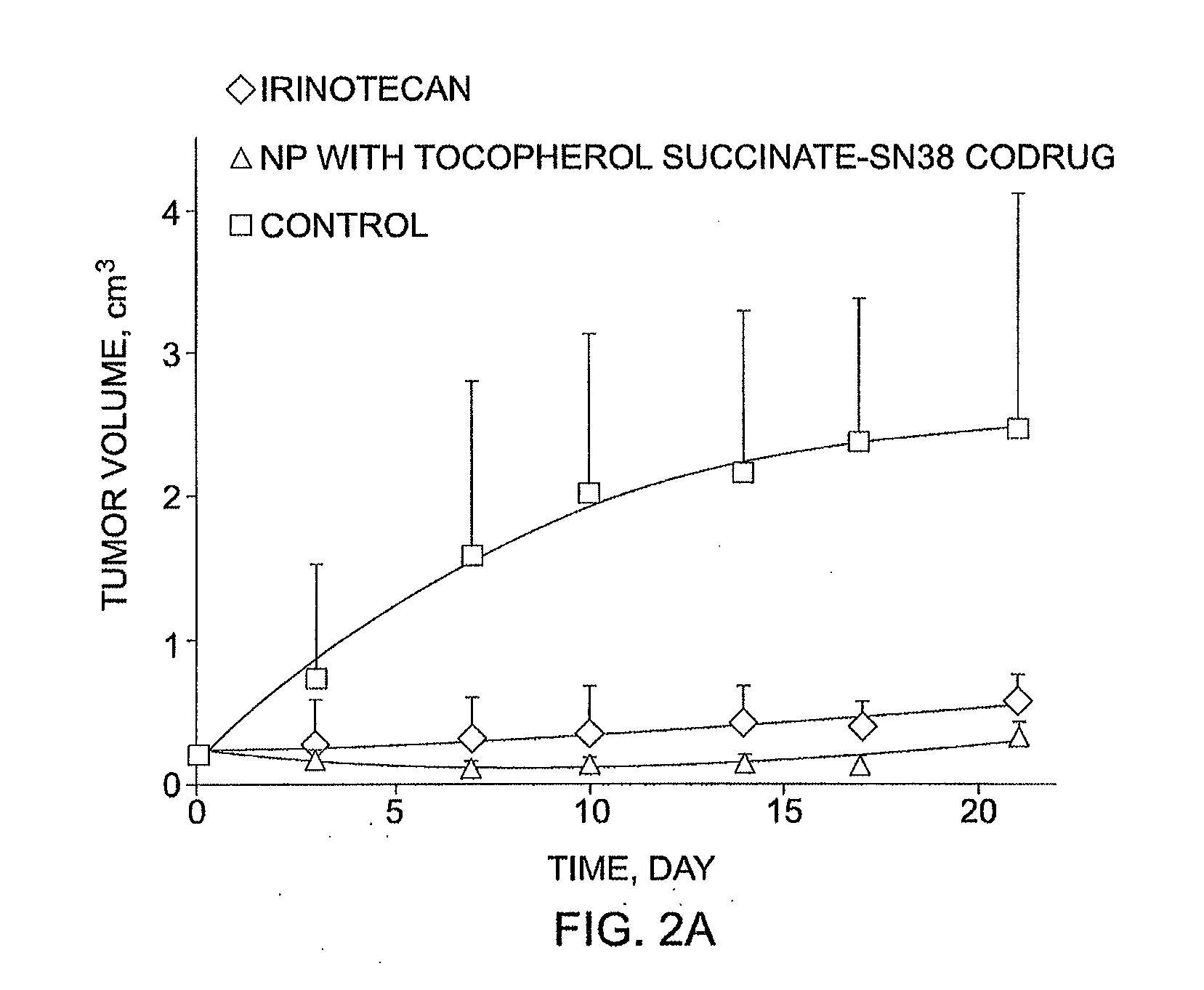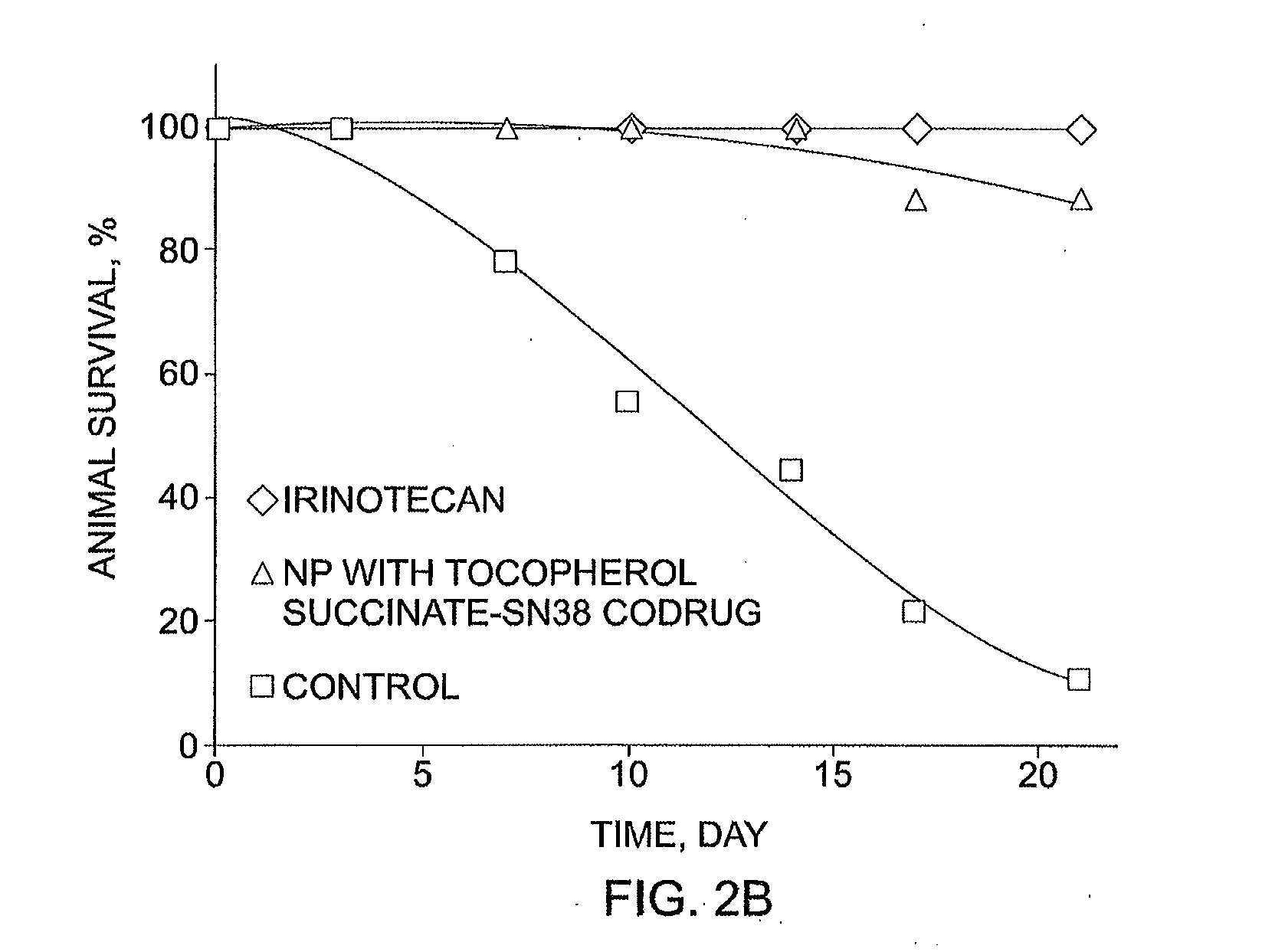Novel pro- and codrug derivatives for nanoparticle delivery of select anticancer agents formed using rapidly cleavable phenolic ester bridges
a technology of phenolic ester and nanoparticles, which is applied in the direction of heterocyclic compound active ingredients, biocide, organic chemistry, etc., can solve the problems of insufficient toxicity, severe toxic effects, and suppression of the immune system, and the use of water-soluble precursors does not address toxicity problems
- Summary
- Abstract
- Description
- Claims
- Application Information
AI Technical Summary
Benefits of technology
Problems solved by technology
Method used
Image
Examples
example 1
Preparation of the Conjugate (1a)
[0043]SN-38 (240 mg, 0.60 mmol) and α-tocopheryl hemisuccinate (372 mg, 0.70 mmol) in a mixture of 1-MP (7.8 mL) and dichloromethane (3 mL) were sonicated for 5 min, and the resulting thin suspension was cooled in an ice-water bath. DPTS catalyst (110 mg, 0.37 mmol) and EDC (132 mg, 0.69 mmol) were added, the mixture was stirred in the bath for 10 min, warmed to room temperature (becoming homogeneous) and further stirred for 2 h. Another portion of EDC (204 mg, 1.06 mmol) was added, the stirring was continued for additional 15 h. Aqueous 5% solution of sodium dihydrophosphate (80 mL, acidified with phosphoric acid to pH=3) was added, the mixture was extracted with ethyl acetate (50 mL), the organic phase was washed with water (3×20 mL), with 5M aqueous sodium chloride (80 mL), and dried. The crude product was purified by flash chromatography (silica-gel, chloroform-ethyl acetate, 100:0 to 3:2). Yield of 1a: 423 mg (80%), the structure and purity were...
example 2
Preparation of the Conjugate (1b)
[0044]3-(α-tocopheryloxycarbonyl)propionyloxyacetic acid is first prepared as follows. α-Tocopheryl hemisuccinate (Sigma, ≧0.98%, 208 mg, 0.384 mmol) is neutralized with an equimolar amount of aqueous 40% tetrabutylammonium hydroxide. The resulting Bu4N-salt is dried by co-evaporations in vacuo with 2-propanol and heptane, cooled to 0° C. dissolved in 1-methylpyrrolidinone (1.3 mL), and protected with the argon atmosphere. tert-Butyl bromoacetate (0.071 mL, 0.47 mmol) is added, the mixture is stirred at 0° C. for 1 h and diluted with water (15 mL). The separated ester is extracted with hexane (30 mL), and washed with water (2×15 mL). The combined aqueous layer is extracted with ethyl acetate (15 mL), the organic phase is washed with water (3×15 mL), and the combined extracts are dried. The crude ester is purified by flash chromatography (silica-gel, hexane-ethyl acetate, 100:0 to 10:1) The resulting tert-butyl ester (249 mg) is dissolved in dry CH2Cl...
example 3
Preparation of the Conjugate (1c)
[0046]A mixture of SN-38 (20 mg, 0.050 mmol), β-cholesteryl hemisuccinate (27 mg, 0.055 mmol) and DPTS catalyst (26 mg, 0.088 mmol) in DMAc (0.65 mL) and dichloromethane (0.2 mL) was stirred at room temperature, and EDC (11 mg, 0.056 mmol) was added. The stirring was continued for 2.5 h, and the second portion of EDC (22.mg, 0.11 mmol) followed by dichloromethane (1 mL) were introduced. The stirring at room temperature was continued for 8 h. The resulting thick suspension was diluted with aqueous 5% solution of sodium dihydrophosphate (20 mL, acidified with phosphoric acid to pH=3), extracted with ethyl acetate (25 mL), the organic phase was washed with water (3×10 mL), with 5M aqueous sodium chloride (3×25 mL), and dried. The crude product was purified by flash chromatography (silica-gel, chloroform-ethyl acetate, 100:0 to 3:2). Yield of 1c: 30 mg (70%), the structure and purity were confirmed by TLC and 1H NMR.
PUM
| Property | Measurement | Unit |
|---|---|---|
| dispersion | aaaaa | aaaaa |
| water soluble | aaaaa | aaaaa |
| solubility | aaaaa | aaaaa |
Abstract
Description
Claims
Application Information
 Login to View More
Login to View More - R&D
- Intellectual Property
- Life Sciences
- Materials
- Tech Scout
- Unparalleled Data Quality
- Higher Quality Content
- 60% Fewer Hallucinations
Browse by: Latest US Patents, China's latest patents, Technical Efficacy Thesaurus, Application Domain, Technology Topic, Popular Technical Reports.
© 2025 PatSnap. All rights reserved.Legal|Privacy policy|Modern Slavery Act Transparency Statement|Sitemap|About US| Contact US: help@patsnap.com



